Redesigning nearshore and offshore fish community protocols to incorporate new species identification approaches and determine optimal sampling strategies
Contributing Authors
Mark Vinson (mvinson@usgs.gov, USGS), Daniel Yule (USGS), Amanda Ackiss (USGS)
Executive Summary
Cost-effective surveys designed to give accurate estimates of fish abundance are crucial for sound fisheries management. For example, estimates of the number of coregonines recruiting to fisheries help management agencies on Lake Superior set quotas for roe and flesh fisheries that have annual yields of 6 million pounds. Species diversity is central to ecosystem resilience and restoration because different coregonine species use different habitats and nutritional pathways (Sierszen et al. 2014) and couple these habitats through mass migrations such as nearshore spawning events (Stockwell et al. 2014), diel-vertical (Ahrenstorff et al. 2011), and diel-bank-migrations (Gorman et al. 2012). Understanding factors that impact early survival of different coregonine species in Lake Superior will help restoration efforts in the other Great Lakes. The Great Lake Science Center currently indexes coregonine larval production and recruitment to age-1 is estimates are currently from neuston and bottom trawl catches collected during annual nearshore and offshore fish community surveys. (e.g., Vinson et al. 2016). However, larval fish cannot be sorted to species and age-1 coregonines are sorted using paired fin lengths, a method that does not distinguish among deepwater ciscoes accurately. As a result, differences in habitat use by larvae and age-1 coregonines are poorly understood and recruitment estimates are generated at the species level with low confidence.
Genetic methods are being developed to improve the accuracy of coregonine species identification and when the molecular tools are combined with the nearshore and offshore fish community surveys, additional information about individual fish will be available for generating recruitment estimates. This additional data will require changes to existing sampling strategies. For example, the addition of a genetic-based species identification component to the survey will change existing standard operating procedures (e.g., biologists will need to know how many samples to preserve in ethanol and send out for genetic analysis) and will likely change how staffing and funding are deployed. In this project, we propose using existing data from the nearshore and offshore fish community surveys, and initial data collected during the on-going genetic marker development project, to determine what, if any, changes need to be made to protocols to deliver species-specific larval production and age-1 recruitment estimates.
Lake Superior Kiyi (Coregonus kiyi) reproductive biology
Population genomics identifies cisco (Coregonus artedi), kiyi (C. kiyi), and bloater (C. hoyi) larvae and their demographics in the Apostle Islands, Lake Superior
Spring larval Coregonus diets and zooplankton community patterns in the Apostle Islands, Lake Superior
Genotyping‐by‐sequencing illuminates high levels of divergence among sympatric forms of coregonines in the Laurentian Great Lakes
